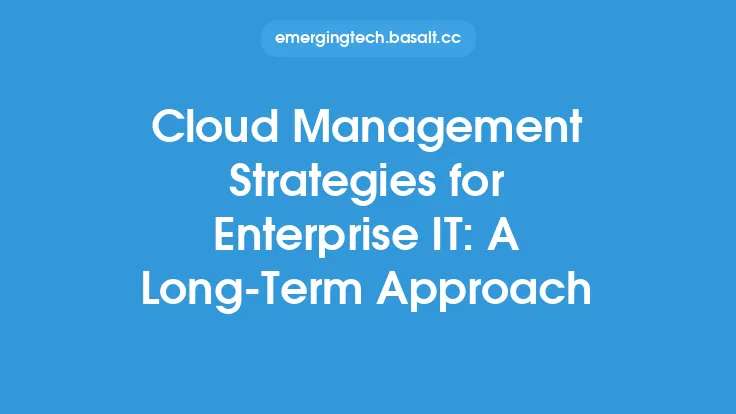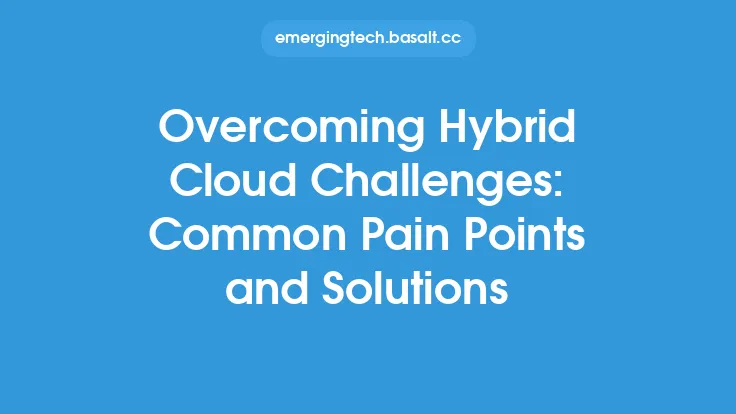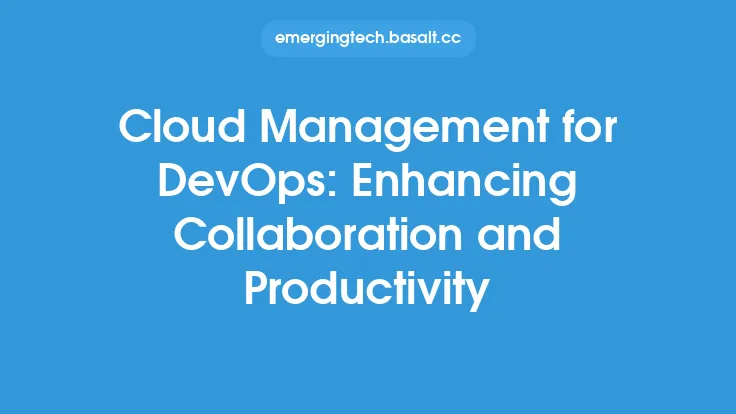In today's digital landscape, organizations are increasingly adopting hybrid cloud environments to leverage the benefits of both on-premises and cloud-based infrastructure. However, this shift towards hybrid cloud environments also introduces new challenges in managing access to sensitive resources and data. Effective access management is crucial to ensure the security and integrity of an organization's assets, regardless of where they reside. In this article, we will delve into the world of access management strategies for hybrid cloud environments, exploring the key concepts, best practices, and technical considerations that organizations must take into account.
Introduction to Access Management in Hybrid Cloud Environments
Access management in hybrid cloud environments involves controlling and managing access to resources, data, and applications that are distributed across on-premises and cloud-based infrastructure. This includes managing user identities, authentication, authorization, and access policies across multiple environments. The goal of access management is to ensure that only authorized users have access to sensitive resources and data, while preventing unauthorized access and minimizing the risk of security breaches.
Key Components of Access Management in Hybrid Cloud Environments
There are several key components that make up an effective access management strategy in hybrid cloud environments. These include:
- Identity Management: This involves managing user identities and their associated attributes, such as usernames, passwords, and group memberships. Identity management systems provide a centralized repository for storing and managing user identities, making it easier to manage access to resources and data.
- Authentication: This involves verifying the identity of users and devices before granting access to resources and data. Authentication mechanisms, such as passwords, biometrics, and smart cards, are used to ensure that only authorized users have access to sensitive resources.
- Authorization: This involves controlling access to resources and data based on user identities, group memberships, and access policies. Authorization mechanisms, such as role-based access control (RBAC) and attribute-based access control (ABAC), are used to ensure that users only have access to the resources and data they need to perform their jobs.
- Access Policies: These are rules that define what actions users can perform on resources and data. Access policies are used to enforce security and compliance requirements, such as data encryption and access logging.
Best Practices for Access Management in Hybrid Cloud Environments
To ensure effective access management in hybrid cloud environments, organizations should follow several best practices. These include:
- Implement a Centralized Identity Management System: A centralized identity management system provides a single repository for storing and managing user identities, making it easier to manage access to resources and data.
- Use Multi-Factor Authentication: Multi-factor authentication provides an additional layer of security by requiring users to provide multiple forms of verification before accessing resources and data.
- Implement Role-Based Access Control: Role-based access control (RBAC) provides a flexible and scalable way to manage access to resources and data based on user roles and responsibilities.
- Monitor and Audit Access: Regular monitoring and auditing of access to resources and data help to detect and prevent security breaches.
Technical Considerations for Access Management in Hybrid Cloud Environments
When implementing access management in hybrid cloud environments, organizations must consider several technical factors. These include:
- Cloud Service Provider (CSP) Integration: Organizations must integrate their access management systems with their cloud service providers (CSPs) to ensure seamless access to cloud-based resources and data.
- Identity Federation: Identity federation involves sharing user identities and attributes between different systems and environments. This is critical in hybrid cloud environments, where users may need to access resources and data across multiple environments.
- Access Token Management: Access tokens are used to authenticate and authorize access to resources and data. Organizations must implement secure access token management practices to prevent token theft and misuse.
- Encryption and Key Management: Data encryption and key management are critical in hybrid cloud environments, where sensitive data may be stored and transmitted across multiple environments.
Challenges and Limitations of Access Management in Hybrid Cloud Environments
While access management is critical in hybrid cloud environments, there are several challenges and limitations that organizations must be aware of. These include:
- Complexity: Hybrid cloud environments are inherently complex, making it challenging to implement and manage access management systems.
- Interoperability: Different cloud service providers (CSPs) and on-premises systems may have different access management protocols and standards, making it challenging to integrate access management systems.
- Security Risks: Hybrid cloud environments introduce new security risks, such as data breaches and unauthorized access, which must be mitigated through effective access management practices.
- Compliance: Organizations must comply with various regulatory requirements, such as GDPR and HIPAA, which can be challenging in hybrid cloud environments.
Conclusion
In conclusion, access management is a critical component of hybrid cloud environments, providing a secure and scalable way to manage access to resources and data. By understanding the key components, best practices, and technical considerations of access management, organizations can ensure the security and integrity of their assets, regardless of where they reside. While there are challenges and limitations to access management in hybrid cloud environments, these can be mitigated through careful planning, implementation, and management of access management systems. As organizations continue to adopt hybrid cloud environments, effective access management will play an increasingly important role in ensuring the security and compliance of their operations.





